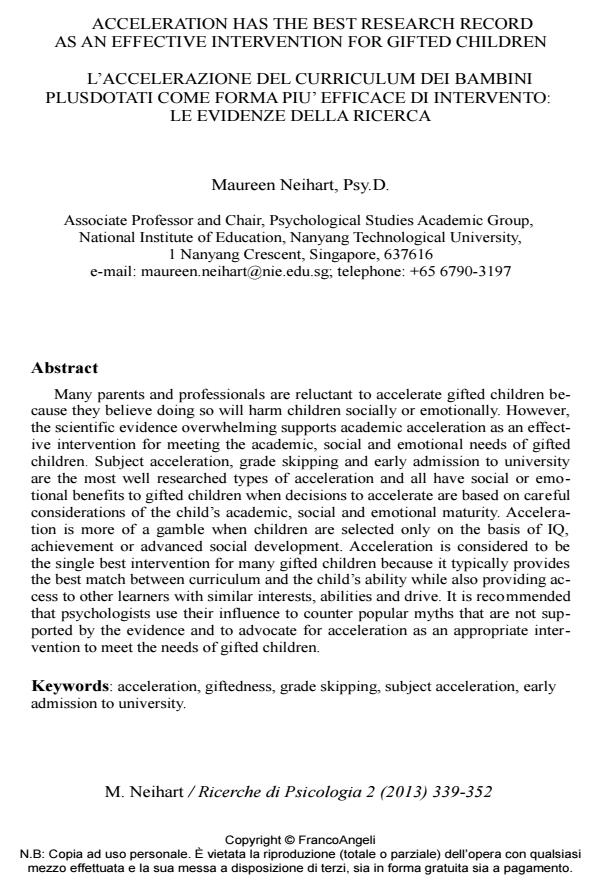Acceleration has the best research record as an effective intervention for gifted children l’accelerazione del curriculum dei bambini
Journal title RICERCHE DI PSICOLOGIA
Author/s Maureen Neihart
Publishing Year 2013 Issue 2013/2
Language English Pages 14 P. 339-352 File size 202 KB
DOI 10.3280/RIP2013-002007
DOI is like a bar code for intellectual property: to have more infomation
click here
Below, you can see the article first page
If you want to buy this article in PDF format, you can do it, following the instructions to buy download credits

FrancoAngeli is member of Publishers International Linking Association, Inc (PILA), a not-for-profit association which run the CrossRef service enabling links to and from online scholarly content.
Many parents and professionals are reluctant to accelerate gifted children because they believe doing so will harm children socially or emotionally. However, the scientific evidence overwhelming supports academic acceleration as an effective intervention for meeting the academic, social and emotional needs of gifted children. Subject acceleration, grade skipping and early admission to university are the most well researched types of acceleration and all have social or emotional benefits to gifted children when decisions to accelerate are based on careful considerations of the child’s academic, social and emotional maturity. Acceleration is more of a gamble when children are selected only on the basis of IQ, achievement or advanced social development. Acceleration is considered to be the single best intervention for many gifted children because it typically provides the best match between curriculum and the child’s ability while also providing access to other learners with similar interests, abilities and drive. It is recommended that psychologists use their influence to counter popular myths that are not supported by the evidence and to advocate for acceleration as an appropriate intervention to meet the needs of gifted children.
Keywords: Accelerazione, plusdotazione, salto di classe, accelerazione per materie, ammissione precoce all’universita.
Maureen Neihart, Acceleration has the best research record as an effective intervention for gifted children l’accelerazione del curriculum dei bambini in "RICERCHE DI PSICOLOGIA " 2/2013, pp 339-352, DOI: 10.3280/RIP2013-002007